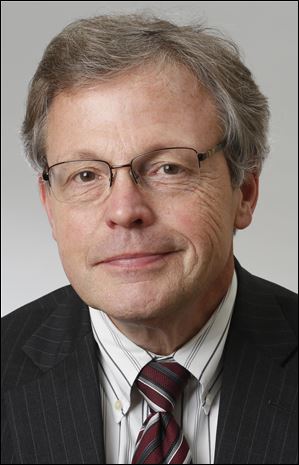
COMMENTARY
Suburban Detroit college draws a blueprint for education
5/23/2014
Lessenberry
DETROIT — Michigan’s sprawling suburban Macomb County has long been an anomaly and a herald of the future.
In the 1950s, when Detroit’s population started emptying into the suburbs, white-collar workers tended to migrate west, to Oakland County; blue-collar ones east, to Macomb County.
Macomb County’s working-class voters won national attention when they became Reagan Democrats in 1980. These days, like the nation, they’ve twice voted for President Obama.
Even as Michigan’s population began slipping, Macomb County, which has about 850,000 people, has continued to grow. But the county may be leading the state in a most unlikely area: education.
With the collapse of the state’s old muscle-based full-employment economy, pretty much everyone seems to agree on three things: Michigan needs more people with higher-education degrees, education needs to be affordable, and it needs to lead to jobs.
Macomb Community College seems to have created a model that works to deliver all three objectives at a wide range of levels. Students of limited means can and do enter the two-year college, take basic courses for less than half the tuition they’d pay at a four-year school, then transfer to an institution that grants bachelor’s or master’s degrees.
The school also hosts stunning three-month-long lecture series on major topics every year, such as the Roaring ’20s and the Great Depression. It brings in world-class scholars and former top government officials to take part.
But the college also provides fast job training to people who need it. Macomb has an eight-week program that trains people to run the fairly complex machines used in today’s assembly plants and other manufacturing operations. The college says the program has an 85 percent job placement rate.
Johnny Jackson, who was living in a homeless shelter when he started the program, is now fully employed and working on a bachelor’s degree.
“This job is what is allowing me to continue with these plans,” said Mr. Jackson, who speaks highly of the program.
The architect of much of the college’s success is its president, Jim Jacobs. He is a soft-spoken, thoughtful man who at first glance would seem to be an unlikely choice to run a sprawling, largely technical school in the industrial Midwest.
Mr. Jacobs, who is from upstate New York, has a doctorate in political economy from Princeton University. He has been with the college as an instructor and administrator for more than 40 years.
“What we are in the business of here is what I call career and technical education,” he said during an interview last week. “We are about giving people skills, sometimes for a specific job, but more importantly, skills they can keep using. We need people who can adapt, and we try to give them the ability to do that.”
Part of the reason for the college’s success, he said, is that it knows the people it serves. Macomb County is one of the largest counties in the nation without a four-year institution of higher education. Macomb Community College, which has more than 20,000 full-time students, may be one of the few large and successful community colleges that has no desire to become a university.
It prefers partnerships with other universities. Detroit’s Wayne State University is building a major advanced technology center across from Macomb’s bustling south campus in Warren. The Macomb college, in return, is remodeling an entrance to take best advantage of it.
Ten years ago, Michigan created a commission chaired by then-Lt. Gov. John Cherry, which produced a major report on higher education and economic growth. The report called for a doubling of the number of bachelor’s degrees awarded by the state over the next decade — something that Michigan didn’t even come close to achieving.
But the commission gave short shrift to any form of higher education other than a conventional four-year degree. The Macomb County college has been busily creating a model that may be much more suited to a diverse industrial society.
“We have basically three types of students here,” Mr. Jacobs said. “Those who see this as a starting point to a conventional four-year degree. Then there are those who want a two-year degree and certification for a specific occupation, of which nursing is perhaps the classic model.”
For the third group, the college offers an array of career preparation programs, including information technology, various forms of engineering technology, and culinary arts.
Former Michigan State University president M. Peter McPherson once told me he had decided the key to success in higher education is “knowing who you serve, and then positioning yourself to serve your clients as best as you possibly can.”
Macomb Community College appears to have done that — and to have created a model other schools would do well to study.
Jack Lessenberry, a member of the journalism faculty at Wayne State University in Detroit and The Blade’s ombudsman, writes on issues and people in Michigan.
Contact him at: omblade@aol.com